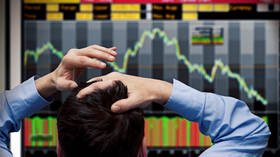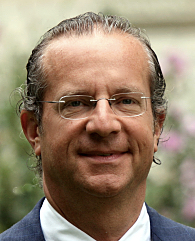Day-trading stock platforms are stealing from the poor and giving to the rich, causing depression and suicides

Thousands of young, inexperienced people have become day traders in stocks during the recent pandemic, thinking they’ll quickly make fortunes. They won’t and they are being duped, manipulated and exploited.
For hundreds of years, the typical market-pricing mechanisms determined the value of businesses and companies. Cash flow and profitability were always a critical metric in determining if a business was viable and worthy of additional capital to grow the company and its profits.
Snake oil salesmen at day trading firms that “charge no commissions” tell novices that “it is different this time.” Upon reviewing a few websites of the most significant day-trading firms, I realized that many statements in their learning centers ranged from stretching the truth and lying by omission to outright material misrepresentations. Remember: If something seems too good to be true, it is.
Since the credit crisis, many media outlets and politicians have been fixated on the stock market. The stock market is where fortunes are made and made quickly. One of the ridiculous false narratives put forward by politicians and their talking bobbleheads on TV is the fallacy that increasing stock prices reflect national prosperity.
How many times have you heard some TV bobblehead repeat the same refrain: “Stocks on Wall Street today surged because two million jobs were created” or “Germany's DAX stocks tumbled today because a million more jobs were lost” or “Riots and Covid-19 are expected to kill many small businesses across the US”?
Whatever stocks do, the media feel it necessary to give you their opinion, presented as news, on why markets moved. Sometimes the media are correct, but most of the time, they are clueless. Your main risk management goal needs to be the return of capital before return on capital. Never take a huge risk, and if your position goes bad, cut your losses early and sell. Do not dither and hope. SELL! Hope is not a viable trading strategy.
I was deeply saddened recently when I read that Alexander Kearns had committed suicide after realizing he had lost nearly $750,000 day-trading. Kearns was a 20-year-old college student who had a bright future in front of him, and he made one bad mistake. This was devastating news that highlighted many problems.
The platform Kearns was trading on should never have allowed him to trade in any options products. As an expert in these financial products, I know that options were inappropriate investment products for the college student. He should have NEVER been allowed to trade derivatives. It is likely that litigation against that firm by Kearns' family would be successful and could prevent further loss of lives.
Trading is not a video game. Trading is not easy. No one makes money all the time when trading. In fact, a few of my best trades early on in my career lost money but taught me an invaluable lesson, and I never repeated those mistakes. These mistakes were expensive on-the-job training. Having energy and enthusiasm about buying shares and investing is terrific but, like everything in life, getting it right takes discipline, hard work and hours of your own extensive, independent analysis. Many of the analysts you read are outright wrong.
People need to realize that every financial firm’s objective is to make money. ALL OF THESE firms make money EVERY TIME you trade. The firms are claiming “we charge no fees” because those firms are selling your orders to high-frequency trading firms, for which they are paid handsomely. There is no such thing as “a free lunch” or easy, quick profits trading stocks. Remember, if it sounds too good to be true, it is.
Also on rt.com Party like it’s 1929! Buying into bankrupt companies is insane. It’s dot-com bubble x 10mn, and it’s doomed to failLoss of your money can cause depression and panic among inexperienced students who quickly lose a lot of money and confidence. In the last few years, I have seen numerous headlines that go something like this: Trader turns $30,000 into a million dollars in a year. For every story about someone who made a “fast fortune”, there are thousands of real-life experiences of people who lost everything. Why are the more massive wipe-outs not reported by the fake news media? Because it’s bad for Wall Street’s business model. Here are two points you will learn nowhere else:
Markets are rigged.
There are no regulators that protect investors.
I detail how Washington and Wall Street partner in fraud to exploit inexperienced and experienced traders in an entire chapter of my book, Planet Ponzi.
How are markets rigged? About ten years ago, we had a “flash crash” and stocks dropped a few thousand points quickly. There were no sellers in the volatility futures market, so I sold volatility futures at 75 percent and made a fortune because markets came back within hours. Unfortunately, the exchange broke those trades the next day and stole my profits because some “local traders” got skinned and convinced regulators to call back these trades.
In 1978, Hillary Clinton invested $4,000 in 10 hog futures contracts and made $100,000. My point: VIX (volatility index) and hog futures are only for professional investors. I was screwed, and Hillary Clinton made money trading pork bellies. Go figure.
These are just two examples of rigging through nonexistent regulation that the government claims is here to help investors – they help big banks and institutions, not individuals. During the 2008 credit crisis, trillions in taxpayer-funded bailouts went to financial institutions that committed crimes and no one was prosecuted.
The US Federal Reserve and other central banks have printed over 100 trillion dollars that has distorted market-pricing mechanisms and inflated the most grotesque asset bubbles in history, while widening the wealth inequality gap to levels never seen before. The money central banks created out of thin air was utilized for stock buybacks, which for good reason were illegal 30 years ago and should be illegal now. They are a scam to enrich executives.
By the most recent estimates, I have noticed we have around 30 percent participation by retail in stock markets. Typically, retail investors always buy at the top of the market and lose a fortune. Fortunately, the clients I advise make money; unfortunately, those I share my views with for free mostly never listen and don’t.
The price action of markets has become irrational, and irrational price action in overvalued markets always ends badly. This time will be no exception.
Think your friends would be interested? Share this story!
The statements, views and opinions expressed in this column are solely those of the author and do not necessarily represent those of RT.















